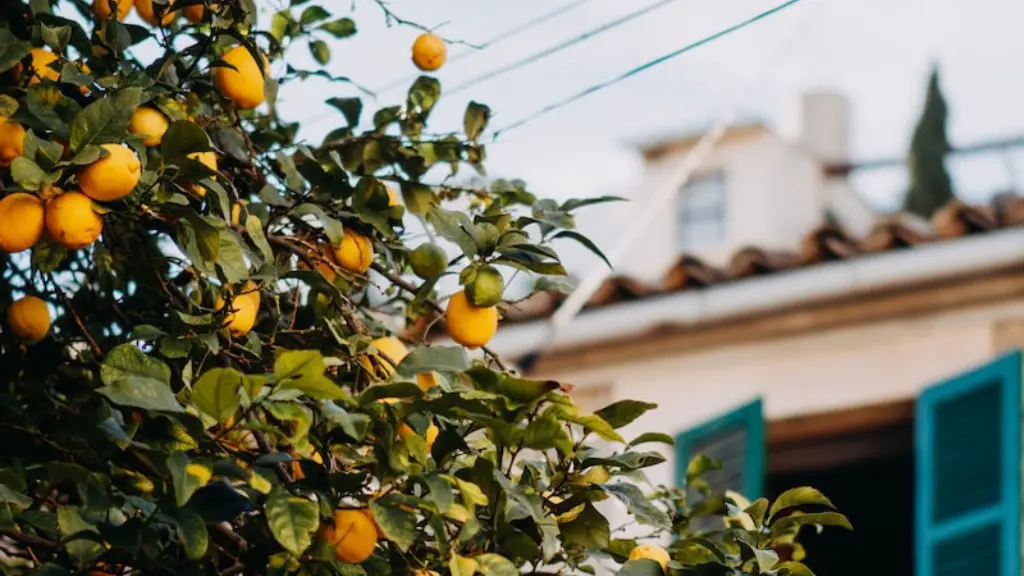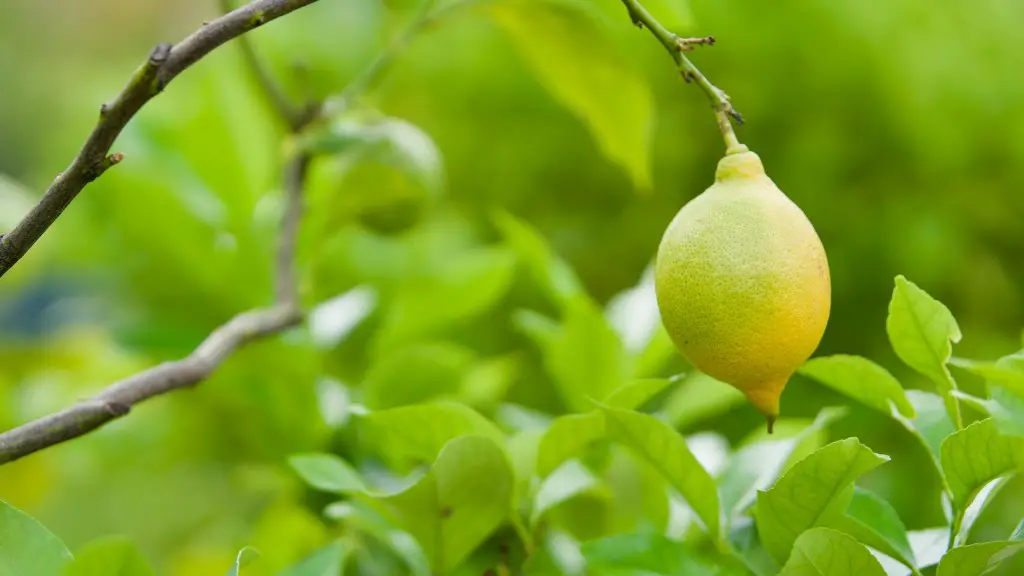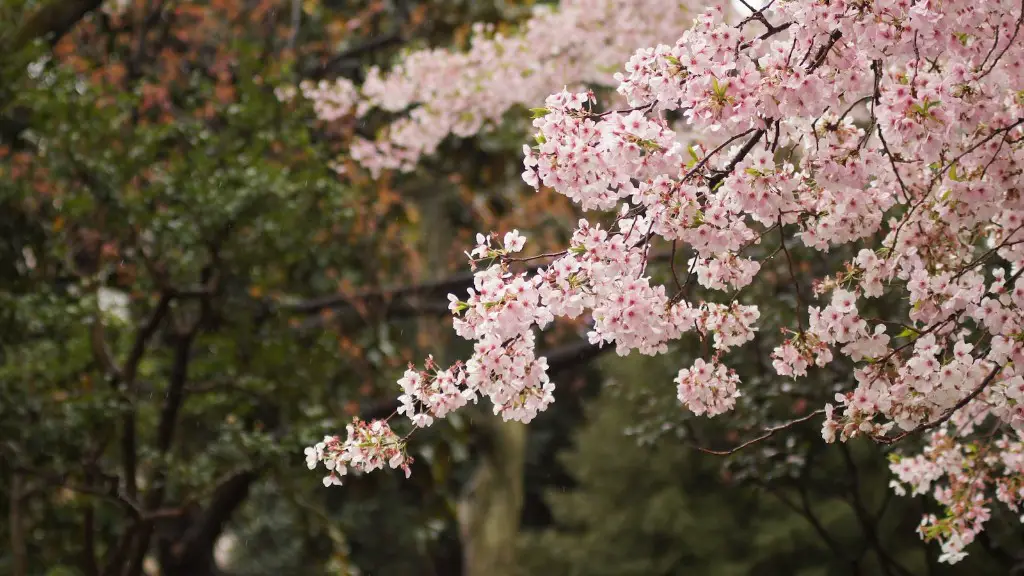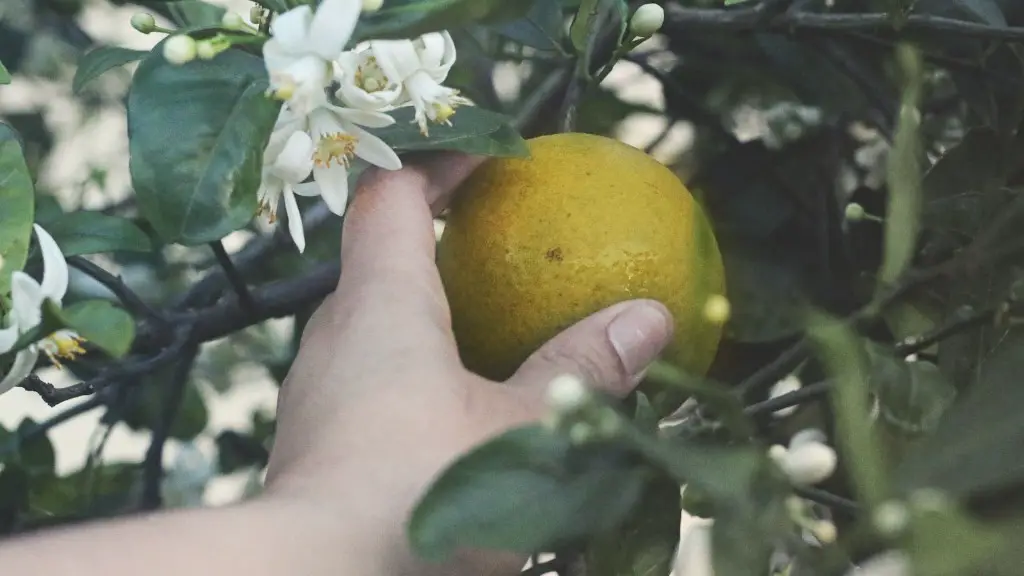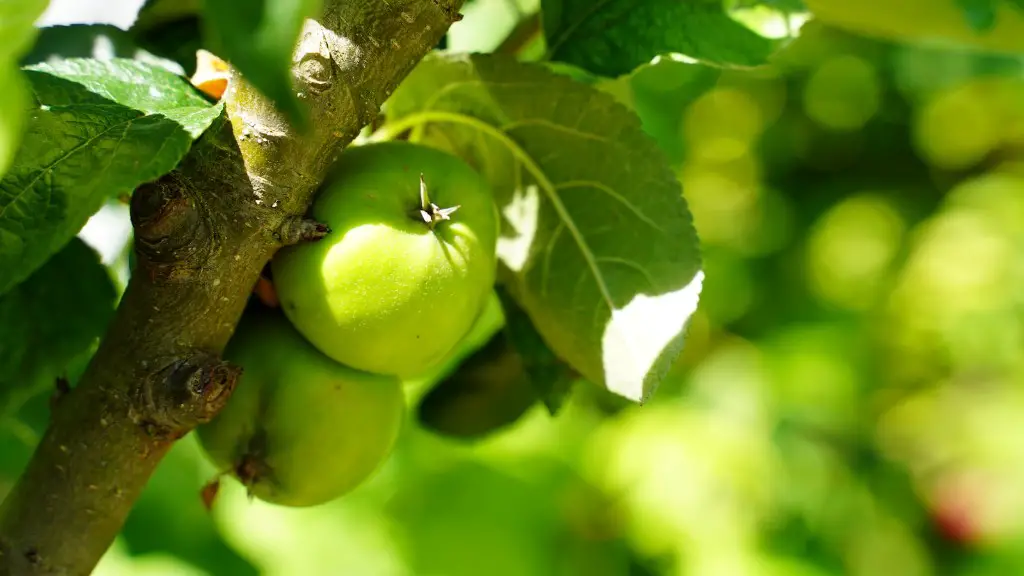Can you grow a lemon tree in your house? It is possible, but will depend on your home environment and the type of lemon tree. The first thing to understand is that lemon trees, like any other species of tree, need adequate space, light, air circulation, water and nutrients in order to grow and thrive.
In order to successfully grow a lemon tree indoors, you’ll need to replicate the environment of an outdoor lemon tree as closely as possible. This means that you’ll need to provide a large pot or container with adequate drainage and soil, full sun exposure, and suitable temperatures. You’ll also need to water your lemon tree regularly and feed it the right fertilizer.
When it comes to selecting a lemon tree, you should opt for a variety that is well-suited to growing indoors. There are quite a few varieties which are generally easier to grow indoors, such as the Meyer lemon tree. This variety is fairly small in size, hardy and tolerant of cool weather.
To ensure that your lemon tree is healthy and thriving, you’ll need to keep an eye on the temperature, humidity and light levels in the home. When temperatures drop below 12 degrees Celsius, it’s a good idea to move the tree to a warmer spot. On the other hand, if temperatures get too high, the tree may suffer from dry leaves or scorching. The humidity levels should be kept relatively constant and the tree should receive at least five hours of sunlight each day.
Lemon trees can be pruned in order to encourage more vigorous growth and produce larger fruit yields. When trimming your lemon tree, it’s important to make sure that you don’t prune too severely or remove too many leaves. This can stunt the growth of the tree and reduce the yields.
Finally, it’s essential to water your lemon tree regularly in order to keep the soil moist and ensure adequate growth. You should aim to water the tree every three to four days, though you may need to adjust this depending on the weather and soil conditions.
Location
When deciding where to place your lemon tree, it is important to take both sunlight exposure and temperature into consideration. Lemon trees need the right amount of direct sunlight, so be sure to make sure your chosen spot is well lit throughout the day. As for temperature, it is best to keep your lemon tree in an area where the temperature falls between 10-35 degrees Celsius.
You should also consider how much space you have available for your lemon tree. Most varieties require a minimum space of about one meter squared, and you should bear this in mind when selecting a pot or container for your tree.
Also, it is important to keep in mind that your lemon tree will outgrow its pot eventually, so it’s best to choose one that is roomy enough to accommodate its eventual size. Additionally, water drainage is important, and it is recommended that your pot or container is equipped with multiple drainage holes.
Finally, it is best to put your lemon tree in an area of your home where you can easily observe and care for it. For example, a patio or living room with plenty of natural light and temperatures that stay above 10-12 degrees Celsius throughout the year would be a suitable area.
Fertilisers
Fertilisers are an important element when it comes to nurturing a happy and healthy lemon tree. Lemon trees need plenty of nutrients, and it is recommended that you use an all-purpose fertilizer once a week during the growing season. Additionally, you can spread organic materials such as compost or mulch around the tree to promote healthy growth.
You should also be aware that fertilizers can be damaging if used incorrectly, so it is important to follow the instructions on the packaging and apply the appropriate amount for your lemon tree. Additionally, you should be sure to water the ground well before and after application, avoiding contact between the fertilizer and the trunk.
Finally, it is best to choose the right fertilizer for your tree. Some fertilisers are suitable for all citrus trees, while others are designed specifically for making sure lemon trees get the right nutrients. Be sure to do your research and select an appropriate fertilizer that is suitable for your tree.
Pests and Diseases
Due to their outdoor origins, lemon trees are naturally susceptible to pests and diseases. The most common pests to watch out for are aphids, whitefly, mealybugs and scale. These pests can cause yellowing leaves, wilting and premature leaf drop, so it is important to take steps to protect your lemon tree from them.
The best way to protect your lemon tree from pests is to make sure that the environment inside your home is as pest-free as possible. Regular cleaning of the surrounding area and ensuring proper ventilation can help to control pest populations. Additionally, natural oils such as neem oil can be used to repel or kill pests if needed.
Diseases can also be a problem for lemon trees, with the most common being root rot and brown rot. Root rot is a fungal disease that can be caused by overwatering or overly moist soil, while brown rot is caused by a fungus which infects developing fruits. The best way to protect your lemon tree from fungal diseases is to make sure that it is not exposed to excessive moisture.
Finally, it is important to keep an eye out for any unusual signs or symptoms that may indicate pests or disease. Keep an eye out for yellowing or wilting leaves, evidence of pests, and any darkened or discolored fruits. If you do notice any symptoms, it is best to take steps to correct the problem as soon as possible in order to limit any damage.
Harvesting and Storing Lemons
If everything goes according to plan, eventually your lemon tree will produce beautiful, ripe fruits. It is important to wait until the lemons are ripe before harvesting them, as their taste will be much sweeter and juicier. Lemons typically take 3-5 months to ripen, so patience is key!
Once the lemons are ripe, you can begin the harvesting process. To do so, carefully cut the lemons from the stem using a sharp knife. Be careful not to harm the stem, as any damage can lead to disease in your lemon tree.
After harvesting, you can store the lemons for a few weeks by putting them in a bowl filled with deep water and a tablespoon of salt. Alternatively, you can store the lemons in a paper bag in the refrigerator for up to one month. If you do decide to store the lemons, make sure to check them regularly for any signs of decay.
Finally, it is important to note that in many cases, lemon trees do require a period of dormancy in order to remain healthy. This means that the tree should be somewhat dormant over winter, keeping the tree temperature regulated and avoiding any drastic changes.
Disease Prevention and Treatment
Diseases are a major cause of concern when it comes to lemon trees, and preventing them is key to ensuring a healthy and productive tree. In order to prevent diseases, it is important to keep the environment of your lemon tree stable and the soil quality consistent. In addition, make sure to avoid overwatering and check your tree regularly for any signs of pests or disease.
If your lemon tree does become infected with a disease, it is important to take prompt action. Depending on the disease, it may be possible to treat it with a fungicide, insecticide or natural remedy. However, it is always best to contact a professional for advice if you are unsure of what to do.
Finally, it is important to remember that prevention is always better than treatment. If you stay on top of your lemon tree’s health and environment, you can minimize the risk of disease occurring in the first place. As such, it is important to keep an eye on the tree’s water levels, soil and temperatures, and address any issues as soon as they arise.
